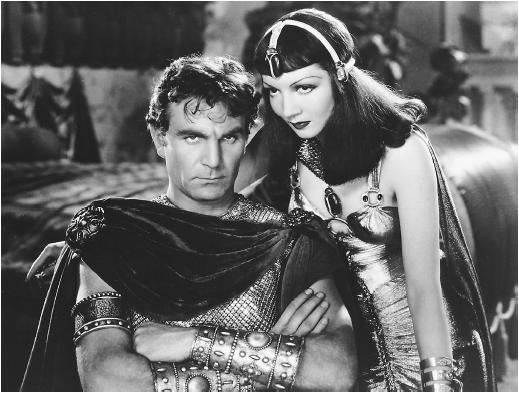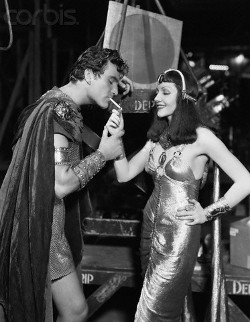Skip to comments.
Monument Offers Clues to Size of Cleopatra’s Unwieldy Ships
Archaeology Magazine ^
| Thursday, March 28, 2019
| editors
Posted on 04/01/2019 7:22:56 PM PDT by SunkenCiv
A new study of a monument built in Greece near the city of Nicopolis to commemorate Octavian’s victory over Cleopatra, Queen of Egypt, and her Roman lover, Mark Antony, in the Ionian Sea at the Battle of Actium has provided new information about Cleopatra’s fleet of warships, according to a report in The Independent. The monument once featured bronze battering rams set in well-fitted niches that had been taken from 35 of the 350 ships captured by Octavian during the battle. Recent excavation and measurement of those niches has allowed archaeologists to calculate the size of the timbers that held the rams and the ships together, and therefore estimate the size of the ships. The largest ship may have been more than 130 feet long and carried rams about five feet tall and eight feet long, or at least four times the size of the largest-known ancient marine battering rams. “Both historically and archaeologically, this remarkable Roman structure is of tremendous international importance -- and continuing research is likely to shed yet more light on the battle that gave birth to the Roman Empire,” said Konstantinos Zachos of the Greek Ministry of Culture. The rams are thought to have been removed from the monument and melted down for reuse by the fourth or fifth century A.D.
(Excerpt) Read more at archaeology.org ...
TOPICS: History; Science; Travel
KEYWORDS: actium; ancientnavigation; cleopatra; cleopatravii; egypt; godsgravesglyphs; konstantinoszachos; markantony; navigation; nicopolis; octavian; romanempire
Navigation: use the links below to view more comments.
first 1-20, 21-36 next last
1
posted on
04/01/2019 7:22:56 PM PDT
by
SunkenCiv
To: SunkenCiv
2
posted on
04/01/2019 7:24:28 PM PDT
by
BenLurkin
(The above is not a statement of fact. It is either satire or opinion. Or both.)
To: SunkenCiv
Ships? Oh Ok, I thought I read...never mind.
3
posted on
04/01/2019 7:24:42 PM PDT
by
max americana
(Fired libtards at our company for the past 12 yrs at every election. I hope all liberals die.)
a selection of four or five, various lengths, documentaries on Battle of Actium. In short — Marcus Agrippa used land and sea forces to knock off Antony’s forward bases along the eastern shore of the Adriatic, one by one, from north to south. Antony lay in wait, getting ready, training troops, gathering forces and ships, and figuring on a single decisive battle on his own terms. He got it. He still lost.
http://www.google.com/search?q=documentary+battle+of+actium
4
posted on
04/01/2019 7:30:18 PM PDT
by
SunkenCiv
(Imagine an imaginary menagerie manager imagining managing an imaginary menagerie.)
To: StayAt HomeMother; Ernest_at_the_Beach; 1ofmanyfree; 21twelve; 24Karet; 2ndDivisionVet; 31R1O; ...
5
posted on
04/01/2019 7:30:34 PM PDT
by
SunkenCiv
(Imagine an imaginary menagerie manager imagining managing an imaginary menagerie.)
To: BenLurkin
It boggles the mind how many living descendants Antony must have by now -- he couldn't keep his toga shut.
6
posted on
04/01/2019 7:31:33 PM PDT
by
SunkenCiv
(Imagine an imaginary menagerie manager imagining managing an imaginary menagerie.)
To: max americana
Hey, why do ya think she lived on a barge? On the Nile? ;^).
7
posted on
04/01/2019 7:32:17 PM PDT
by
SunkenCiv
(Imagine an imaginary menagerie manager imagining managing an imaginary menagerie.)
To: max americana
8
posted on
04/01/2019 7:32:37 PM PDT
by
BenLurkin
(The above is not a statement of fact. It is either satire or opinion. Or both.)
A single Greek word, ginesthoi, or "make it so," written at the bottom of a Ptolemaic papyrus may have been written by the Egyptian queen Cleopatra VII herself, says Dutch papyrologist Peter van Minnen of the University of Groningen. [Make It So! Sayeth Cleopatra]
9
posted on
04/01/2019 7:34:27 PM PDT
by
SunkenCiv
(Imagine an imaginary menagerie manager imagining managing an imaginary menagerie.)
To: SunkenCiv
Yes, but she was the brains of the operation...

10
posted on
04/01/2019 7:36:12 PM PDT
by
BenLurkin
(The above is not a statement of fact. It is either satire or opinion. Or both.)
To: SunkenCiv
And she was a very bad influence on him...

11
posted on
04/01/2019 7:38:24 PM PDT
by
BenLurkin
(The above is not a statement of fact. It is either satire or opinion. Or both.)
To: SunkenCiv
Waiting for Antony’s battering ram?
To: SunkenCiv
The link at the end of the article you takes you to "
Caesar’s Diplomatic Breakdown" with this...
Dutch archaeologists have examined archaeological, historical, and geochemical data to pinpoint the site of a catastrophic battle between Julius Caesar and two Germanic tribes, the Tencteri and Usipetes. According to the Commentarii de Bello Gallico, Caesar’s firsthand account of the campaign, the two tribes crossed the Rhine River in 55 B.C. and petitioned Caesar to allow them to settle in Gaul. After negotiations collapsed and the Germans attacked his cavalry, Caesar directed his entire army of eight legions against the German camp, killing 150,000 to 200,000 men, women, and children.
Caesar sure knew how to deal with invading armies on his turf.
To: SunkenCiv
Oh, they called them ships in those days? I would have helped her wield them! :)
14
posted on
04/01/2019 7:52:12 PM PDT
by
TigersEye
(This is the age of the death of reason.)
To: ProtectOurFreedom
Caesar’s firsthand account of the campaign,
and
Caesar sure knew how to deal with invading armies on his turf.
*****************************************************
Actually, the way Caesar tells it he is the ever-successful genius in all matters. There is considerable doubt as to the accuracy of many things he wrote.
But he certainly knew how to present the facts to his own advantage - sort of like the original CNN, huh?
To: Honest Nigerian
Interesting comment. Thanks. I imagine other accounts and battlefield archeology should provide some confirmation.
Nice screen name, BTW. Made me chuckle.
To: SunkenCiv
Personally, I’m much more interested in the size of her hips.
To: TigersEye
“Oh, they called them ships in those days? I would have helped her wield them! :)”
Lol, for sure. But, I’m wondering where the timber came from for all these ships. I’m guessing trees of any decent size had long been cut down. Was timber transported from interior of Africa? Or, Northern Europe maybe? Wondering....
18
posted on
04/02/2019 3:40:29 AM PDT
by
snoringbear
(,W,E.oGovernment is the Pimp,)
To: Honest Nigerian
19
posted on
04/02/2019 5:34:59 AM PDT
by
Tallguy
To: SunkenCiv
It boggles the mind how many living descendants Antony must have by now -- he couldn't keep his toga shut.
Well, he may have tried, but he didn't produce any descendants with Gaius Scribonius Curio.
("How curious, Gaius Scribonius, is that a stilus under your toga, or are you just happy to see me?")
20
posted on
04/02/2019 6:47:05 AM PDT
by
nicollo
(I said no!)
Navigation: use the links below to view more comments.
first 1-20, 21-36 next last
Disclaimer:
Opinions posted on Free Republic are those of the individual
posters and do not necessarily represent the opinion of Free Republic or its
management. All materials posted herein are protected by copyright law and the
exemption for fair use of copyrighted works.
FreeRepublic.com is powered by software copyright 2000-2008 John Robinson




